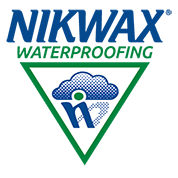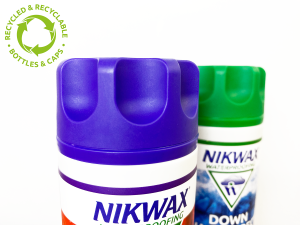Pure backcountry skiers need only look at their gear’s supply chain and their own tracks in the snow to see the environmental footprint of their fun. For those of us who enjoy the occasional chairlift ride and hot soup mid-mountain, the sustainability of skiing infrastructure becomes more complex.
Ski Area Management 101

Most ski areas in the United States operate at least partially on land leased from the Federal government. Base areas will often be on privately owned land, thereby granting slightly more leniency with the management of that infrastructure. It’s fair to say that most Federal oversight focuses on safety and ski area interactions with Federal laws, such as the Endangered Species Act.
The bottom line, environmentally speaking, is that ski areas are pretty much just like any other corporation: they establish their own environmental ethics.
National Sustainable Slopes Initiative
Stepping in to facilitate an in-progress, industry-driven movement, the National Ski Areas Association (NSAA) – a trade association for ski area operators – collaborated on a “Sustainable Slopes Environmental Charter” in 2000. Along with its solution-oriented principles, the charter doesn’t dance around the fact that “…ski areas have some unavoidable impacts.
Updated in 2005, the charter outlines broad philosophies and values. It defines industry-held principles to be used as guidelines for: ski area operations, planning, design, construction, water usage and quality, summertime activities, energy usage and conservation, waste management, fish and wildlife management, forest and wetlands management, air and visual qualities, related transportation, and education and outreach.
The charter even touches on climate change. In 2003, the NSAA partnered with the National Resource Defense Council (NRDC) for a “Keep Winter Cool” program. (Ed. Note: The program no longer exists in its original form.) The NSAA doesn’t mince words.
“Through this policy, we aim to raise awareness of the potential impacts of climate change on our weather-dependent business and the winter recreation experience; reduce our own greenhouse gas emissions; and encourage others to take action as well.”
It goes on to say that not only should ski areas operators voluntarily reduce greenhouse gas emissions, but they should also advocate for national reductions through legislative and regulatory means.
Ask Your Home Area
A list of “endorsing resorts” is on the last page of the online Charter. But to find out what is truly happening on the ground, as opposed to general principles, check out the website for your home area.
Take Aspen Skiing Company, for example. The tony resort may make the news for Charlie Sheen outbursts and other celebrity sightings, but of real interest is its longstanding environmental commitment. The organization has had a vice president of sustainability, Auden Schendler, for over 13 years.
Among the myriad awards and the simple steps like recycling efforts and retrofitting lighting systems, Aspen Skiing Company dives in head first on big projects, too. In 2012, the company earned its sixth Golden Eagle Award for ‘Overall Environmental Excellence.’
The award was earned in large part from a creative collaboration with unlikely suspects: coal and energy utilities. The three entities invested $5.5 million on a methane (a greenhouse gas) capture system at a nearby coal mine. The methane project eliminates the equivalent of three times the carbon pollution the ski resort would otherwise create each year in energy use. Additionally, the project generates carbon negative electricity equal to the amount of energy used by Aspen Skiing Company annually. This is expected to hold true for at least 15 more years. (This paragraph paraphrased from www.aspensnowmass.com/environment. Click through for more comprehensive info.)
What is your local ski area doing to mitigate its environmental impacts? Check into it, and do what you can to help.
Nikwax applauds all efforts – small and large. Sometimes the least recognized achievements have the greatest impact.








